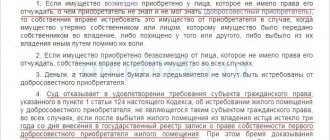Searching for information about abandoned plots
To begin search activities, you will need to use a public cadastral map . It is presented in electronic version. For this purpose, it will be enough to log into the official portal of Rosreest. This act helps the citizen to find out whether the allotment was previously formed or not.
Initially, you need to find an area on the map that belongs to the citizen seeking information. This action is not difficult. Required:
- in the upper left corner indicate the number assigned to this territory in the cadastre;
- find your site;
- find abandoned land.
Searching for information about an allotment is carried out using documentation confirming ownership of it. If a citizen, after carrying out these actions, sees red lines around the desired territory, this indicates that the area was previously registered. This is a definite plus in the process of registering ownership rights to the plot.
Information!
If there are no such boundaries, then initially you will need to form an allotment. In this case, land plots owned by the city or state will be used. From a legislative point of view, allotments act as real estate. This means that rights to it arise only after the appropriate registration has been carried out. To do this, you will need to contact the Rosreestr office.
Another important point is that the law indicates the impossibility of classifying plots as ownerless. This means that if a site is not subject to the right of ownership of a specific citizen or municipal entity, then the state body is recognized as its owner.
Initially, you need to find out who has ownership rights to the site .
When it is a municipality or a state, the citizen will need to pay a certain fee to obtain land rights. Bidding is used for this purpose.
How to register an abandoned plot as property by acquisitive prescription
If the actions aimed at finding the owner of the plot are unsuccessful, then in this case the current legislation provides for a special procedure for the possibility of acquiring the plot.
Ownership of an abandoned plot can be obtained by virtue of the so-called acquisitive prescription. This basis for purchasing a plot provides for the fact that the land plot was cultivated by the applicant for its acquisition for a long period of time (more than 15 years).
This is important to know: New law on summer cottages and building a house on a garden plot in 2020
And over the years, none of the legal owners have declared their rights. Thus, a bona fide user of the site has the opportunity to legalize his rights to the land. The main condition for such an acquisition is continuous care of the land for at least 15 years.
An important factor in this case is the openness of the use of the land plot; this fact should not be hidden from anyone.
How to register land ownership?
How to acquire ownership of an ownerless plot of land, read here.
How to register the squatting of a land plot into ownership, read the link: https://uropora.ru/zemlya/kak-zaxvatit-zemlyu-i-ee-oformit.html
How is the search for the owner of the plot carried out?
Warning
At the initial stage, a citizen who has decided to buy an ownerless plot needs to find out who its owner is. You will need to contact the Rosreestr office and ask for an extract from the Unified State Register of Real Estate.
There are several methods available to obtain this information:
- Personal appeal to the specified organization. You need to take a ticket and wait for your turn. When the required number lights up on the display, you will need to approach a specialist and explain the purpose of the call. It is best if the state fee is paid at the time of registration. You can find the details for making payment on the official portal of the specified body or at the stand. However, in the latter case you will need to visit Rosreestr. The fee is 200 rubles, this does not include the commission that must be paid to the banking organization making the payment. An employee of Rosreestr helps to draw up an application and documents for the site will be issued within five days.
- Applying through the post office. You can also send a letter in electronic format. In this case, you will need to pay the state fee and write an application. The fee does not change. Additional costs in this case are associated with the fact that the applicant’s signature needs to be certified when contacting a notary’s office. If an electronic submission form is used, an appropriate signature is required.
- You can apply using the official website of Rosreestr. You will need to enter the section in electronic services and create a request for an extract. Then a letter is sent to the specified email address containing details for making payment of the fee.
Attention!
It is also necessary to obtain information from bodies operating in the field of architecture. The citizen's expenses will include topographic surveying.
The design of such a survey helps to resolve several issues. For example, this applies to:
- If the allotment is subject to the authority of the state or municipality, then in order to understand the situation, the employee of the relevant body must understand whether objects are located on the selected territory, and if so, what kind. This filming will help the citizen indicate that the site is empty, while the state authorities have a guarantee that they will not allocate a section of the highway to a private person.
- Filming helps to draw up a diagram of the allotment. This action is mandatory when there is an allocation of land from a municipal or state fund.
- It will help you finally decide whether you need to purchase the selected plot or not. In some situations, different communication lines may pass through the territory. Then it will be difficult or impossible to build a house on the site.
There are several ways by which ownership of such plots is registered.
First step: how to find out the owner of an abandoned site?
It happens that people use other people's (usually neighboring) plots for many years without their official registration. But even land that has not been cultivated for a long time almost always belongs to someone. Its owner can be an individual, a municipality, or all members of the SNT on the right of common ownership.
Using someone else's land without the owner's permission is considered squatting by law. If the owner shows up, the carefully tended land will have to be given away. Moreover, the gardener who has invested so much work in arranging the site will also be fined
Therefore, the first thing to do is to find out who actually owns the territory. You can obtain such information in the following ways:
- Find the plot on the public cadastral map by address and see if it has been assigned a cadastral number. When the number is known, you need to contact Rosreestr for an extract from the Unified State Register of Real Estate, which indicates the owner. You can request an extract in person, by sending a letter by mail or on the Companies House website. Also, information about the owners may be contained in the land survey file.
- Contact the chairman or accountant of the gardening partnership. They have a household book or a register of SNT members. From these documents you can find out who owns the territory of interest, whether it is owned, and whether title documentation (for example, certificates of perpetual use) was issued to SNT members. It is also worth inquiring about the presence of debts on membership fees and other payments: this will help to understand how long no one has used the site.
If information about the owners could not be found, it is possible that the land is under the jurisdiction of the local administration. After submitting a request, municipal specialists must provide the relevant information.
Options for obtaining land rights
If we consider the option when the right of a citizen extends to the allotment, then the sequence of actions will be as follows:
- First you will need to find who owns the site. Negotiations are then held to sell the plot. The seller can be the owner himself or his legal successors, provided that he is deceased.
- The agreement is marked by drawing up a preliminary purchase and sale agreement. It clearly states the powers and duties and powers of each participant in the upcoming transaction. This agreement will not allow the seller to make adjustments to the agreement in the future. This applies to the cost of the plot and other conditions.
If a citizen was unable to find the owner of the plot or his relatives, then there is an option to register the right to such land. It consists in using the concept of acquisitive prescription . This serves as the basis for obtaining rights to the site.
Information!
The Civil Code states that rights to property are transferred to a person in a situation if he has owned the plot in good faith for a certain period. In this case, only the continuous period of ownership is taken into account; it is 15 years.
The legislation does not specify the exact circumstances under which it is permissible to stop the running of the statute of limitations in relation to real estate. In this case, the vindication claim is not considered as a basis for suspending the running of such a period. The rule of good faith must be observed, which indicates the citizen’s ignorance of the illegality of his possession.
The openness of the use of property is also a significant factor. This indicates that a person should not hide the fact of ownership of a particular plot from society. The citizen must use the plot as if it were his own.
How to register an abandoned summer cottage?
Consider the case:
Several years ago, with the consent of the chairman of the garden society, you began to cultivate an abandoned plot. They built a house, a bathhouse, and possibly other buildings on this site. Now, when the question arose about registering a conditionally abandoned dacha, it turned out that there was a state certificate for this plot, a certificate of ownership and a statement from the previous owner about abandoning the plot.
How can you register ownership of the land now?
In this situation there are 2 options. Since the plot has a legal owner, and the owner has renounced the ownership of this plot, it is necessary to formalize this refusal in the proper way: the owner of the plot should contact the Rosreestr Office with an application to waive the ownership of this plot. After such a refusal, you will be able to register this plot for yourself.
If it is not possible to find the owner of the plot, you need to go to court with a statement of claim to recognize the ownership of the land plot by acquisitive prescription. The condition for satisfying the claim will be the following circumstances, confirmed by evidence: bona fide, open and continuous possession as one’s own land plot for fifteen years by a person who is not the owner of this plot. The presence of the owner of this plot will not be an obstacle to satisfying the claim; in this case, the previous owner of the plot will be the defendant in this case.
This is important to know: New Federal Law on SNT in the latest edition of 2020
Now, let’s explore in more detail the topic of acquisitive prescription.
Acquisitive prescription is one of the compelling arguments.
Often real estate, which some citizens of our country have owned as their own for decades (a plot of land, a house), is in fact very difficult to register as their own and to obtain permission from the authorities. It’s not so simple: go through all the authorities, satisfy all the demands of officials (legal and sometimes illegal) and prove that, in fact, this, say, site has long been yours. Or, in legal terms, you have the right to it by virtue of acquisitive prescription.
This document is a joint resolution of the plenum of the Supreme Court of the Russian Federation and the plenum of the Supreme Arbitration Court of the Russian Federation No. 10/22 dated April 29, 2010, which is called “On some issues arising in judicial practice when resolving disputes related to the protection of property rights and other property rights.” .
This is a very important document for property owners; today we will talk about acquisitive prescription. And let's start with the definition of this concept: “A citizen who is not the owner of property, but who conscientiously, openly and continuously owns either his own real estate for fifteen years or other property for five years, acquires the right of ownership of this property - acquisitive prescription” ( by virtue of paragraph 1 of Article 234 of the Civil Code of the Russian Federation).
Further, the highest courts give the following explanations of paragraph 1 of Article 234 of the Civil Code. “Old possession is considered to be in good faith if the person, receiving possession, did not know and should not have known about the absence of a basis for the emergence of his ownership right.” Simply put, a citizen used and owned, for example, a plot of land, being convinced that he was actually its owner. Or that he has every right to register this plot as his own. If this actual owner knew that another citizen owned the land, and he occupied this plot without permission, then such possession, even for a long period of time, cannot be recognized as bona fide.
Possession by prescription is considered open if the person does not hide the fact that the property is in his possession . That is, for example, he fences and develops a plot of land, cultivates it, plants trees, etc. Taking ordinary measures to ensure the safety of property does not indicate the concealment of this property.
Possession by prescription is considered continuous if it has not ceased during the entire period of acquisitive prescription. If the claim of a long-term owner for the recovery of property from someone else’s illegal possession is satisfied, the previous temporary loss of possession of the disputed property by him is not considered a break in long-term possession. The transfer of property by a long-standing owner into temporary possession of another person does not interrupt the long-term possession.
Owning property as one's own means ownership other than by contract. For this reason, Article 234 of the Civil Code of the Russian Federation is not applicable in cases where ownership of property is carried out on the basis of contractual obligations (rent, storage, gratuitous use, etc.).
I believe that the most common case when acquisitive prescription can be applied to real estate is when the legal owner transfers it to another person without proper registration. For example, a citizen bought a plot of land with a house, but a written sales contract was not drawn up, and the transaction was, naturally, not registered. The “buyer” is convinced that he bought the house and land because he paid the former owner a certain amount, and he gave him the keys to the house. In fact, the former owner remained the formal owner of the house and land.
In other words, the right of ownership by virtue of acquisitive prescription can be acquired for property owned by another person, as well as for ownerless property.
Further. By virtue of paragraph 2 of Article 234 of the Civil Code of the Russian Federation, before acquiring ownership rights to property by virtue of acquisitive prescription, a person who owns the property as his own has the right to protect his possession against third parties who are not the owners of the property, as well as those who do not have the rights to own it due to other grounds provided by law or contract.
A person who believes that he has become the owner of property due to acquisitive prescription may apply to the court with a claim to recognize this right for him. The defendant in a claim for recognition of ownership rights due to acquisitive prescription will be the previous owner of the property.
In cases where the previous owner of real estate was not and should not have been known to the owner by prescription, he has the right to apply to the court to establish the fact of bona fide, open and continuous possession of the property as his own during the period of acquisitive prescription . The state registrar is involved as an interested party in the case.
It is also important that the lack of state registration of ownership of real estate is not considered an obstacle to the recognition of ownership of this property after the expiration of the acquisition limitation period.
The basis for registering property rights in the Unified State Register will be a judicial act satisfying a claim for recognition of property rights due to acquisitive prescription.
A court decision to establish the fact of bona fide, open and continuous ownership of property as one’s own during the period of acquisitive limitation will also be the basis for registration of ownership in the Unified State Register of Rights to Real Estate and Transactions with It (USRP).
And one last thing. Registration of property rights on the basis of a judicial act does not prevent the registration of rights from being challenged by other persons who consider themselves the owners of this property.
Legal has extensive experience in defending and registering ownership rights to real estate, and is also always ready to provide services for asserting rights in court for recognition of ownership of a land plot by acquisitive prescription.
When does the acquisitive limitation period begin?
It is not permissible to begin such a countdown before the end of the period intended for the limitation period. The legislator indicates that this period is three years.
Warning
During the specified period of time, the heirs have the right to form and file a claim, in accordance with which the return of the allotment will be requested.
When three years have passed, the citizen receives the right to contact the municipal administration and submit an application for the allocation of a specific plot of property.
How to register ownership of an ownerless land plot recognized as municipal property
Also worthy of special attention is the possibility of obtaining a site from local authorities after it is registered as ownerless. An ownerless object is registered by the body that carries out state registration of rights, upon the application of the local government authority on whose land they are located.
A year after the ownerless property is registered, the body that is authorized to manage municipal property has the right to apply to the court with the intention of recognizing the rights of municipal ownership of this object.
An ownerless real estate property, which has not been recognized by a court decision as municipal property, may again be taken into possession by the person who left it, or taken into possession on the basis of acquisitive prescription.
In this situation, obtaining ownerless land involves submitting an application to participate in the auction, after which the plot is subject to registration of ownership.
If the only application for participation in the auction for the sale of a plot of land that is in state or municipal ownership is submitted by a person who meets the requirements for auction participants specified in the notice of the auction, and the submitted application also meets the same requirements, then the sale of this plot is carried out to this person. face.
Registration of land rights
If the decision is positive, then the person is given an act confirming his authority to the allotment . Next, you need to deal with cadastral documentation for the land. You should contact the cadastral office. You should visit this body in person. When paying the state fee, you can use the help of a specialist. A chamber employee will help you fill out an application to receive the necessary documentation. Attached to the application is an act confirming the payment of the fee and a paper indicating the transfer of the land to the use of a citizen.
Information!
The law specifies the period during which the act in question is prepared. It is equal to two weeks.
Finally, you need to register the rights to the allotment.
To do this, contact Rosreestr. The registration duration is similar. When an extract from the Unified State Register is issued, a person can use the allotment at his own discretion. Share:
How to find the owner of an abandoned plot of land
If you have decided to purchase an ownerless piece of land, first of all, you need to find who is its owner. To solve this problem, contact Rosreestr and request an extract from the Unified State Register of Real Estate.
You can obtain this information in several ways:
- Contact the registration authority in person. When you arrive at the competent institution, receive a ticket to meet with a specialist
.
It is advisable to pay the state fee before meeting with the employee
.
Details are most often published on information stands. Payment terminals are located in the same building
.
The state fee is two hundred rubles, in addition to the bank commission. Using the advice of the employee, fill out the application
. The documents will be ready in five working days; - Use the services of the Russian Post or send documents via email. To use this method, fill out the accepted application form and pay the state fee
.
If you apply through the post office, be sure to have the signature certified by a notary. When sending a request via email, you must have an electronic digital signature
. The deadline for providing information is five working days. This method is suitable for those who do not want to stand in lines and have the skills to fill out the application correctly; - Request information via the Rosreestr website. This procedure is very simple: select the “Electronic Services” section, and then fill out a request to receive information from the Unified State Register of Real Estate
.
Next, instructions on payment methods will be sent to your email address
. After five days, a message will be sent here. There will be a link and key necessary to review and download the electronic document.
Registration of ownership rights to a land plot
The final point of any of the above activities is the registration of ownership.
To register your right to a plot of land in Rosrestr, send the following documents:
- Proving your identity;
- Boundary plan;
- A receipt confirming the fact of payment of the state duty in the amount of two thousand rubles;
- Cadastral passport;
- Agreement on the purchase and sale of land.
The Rosreestr specialist will accept the original documents and their copies, set the date for receiving the certificate of ownership of the land and previously submitted documents. Also, this employee of the competent institution is obliged, within the framework of the regulatory and corporate regulations governing his activities, to provide all citizens who contact him with full information support on the activities carried out by this institution, as well as to further refer applicants along the service vector of this public service.
These actions help speed up service delivery to citizens within the framework of the state procedure for providing services to the population, which leads to high-quality implementation of social policy.







